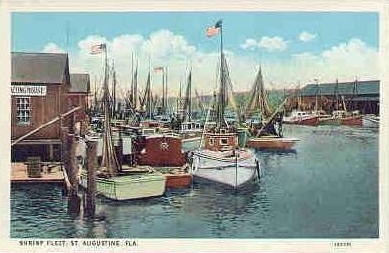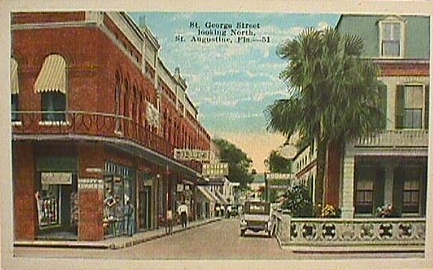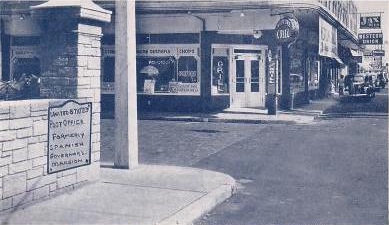
Shrimpboats, Sebastian River, approx. 1925. For many years St. Augustine was the
center of a thriving shrimping industry, not only for shrimping, but for the building
of Shrimp Boats in three large yards, Nix Boatyard on Nix Boatyard Road, the
Trawlers on South Riberia, and the biggest of all Desco. It was said that the
sun never set on a Desco built trawler.

Ponce de Leon Monument, 1930's. To the right may be seen the Plaza Hotel, now
a restaurant, bar, and shops. The Plaza Hotel later housed the Potter's Wax
Museum. The pier is the municipal marina. Florida Archives Collection.

Florida Normal and Industrial Institute (Florida Memorial). Florida Archives Collection.
The Institute was founded in Jacksonville in 1892 as the Florida Baptist Acadamy and
moved to St. Augustine in 1918. It is now located in Miami. Today the site, on
West King Street is marked
by the hulks of burned out buildings.

Florida East Coast Railway Shops, photo by Richard C. Beall, Florida Archives Collection.

St. George Street, 1920's. The building to the right is the Bishop's Residence next to the
Cathedral. For many years the City had an ordinance making it illegal to sit on the
wall in front of the residence or on the wall in front of the Episcopal Church. Compare photo with
next photo taken in 1941.

The Neptune Grille on the corner of Cathedral and St. George. The location is now occupied by
a parking lot and a tourism information booth.
HOME